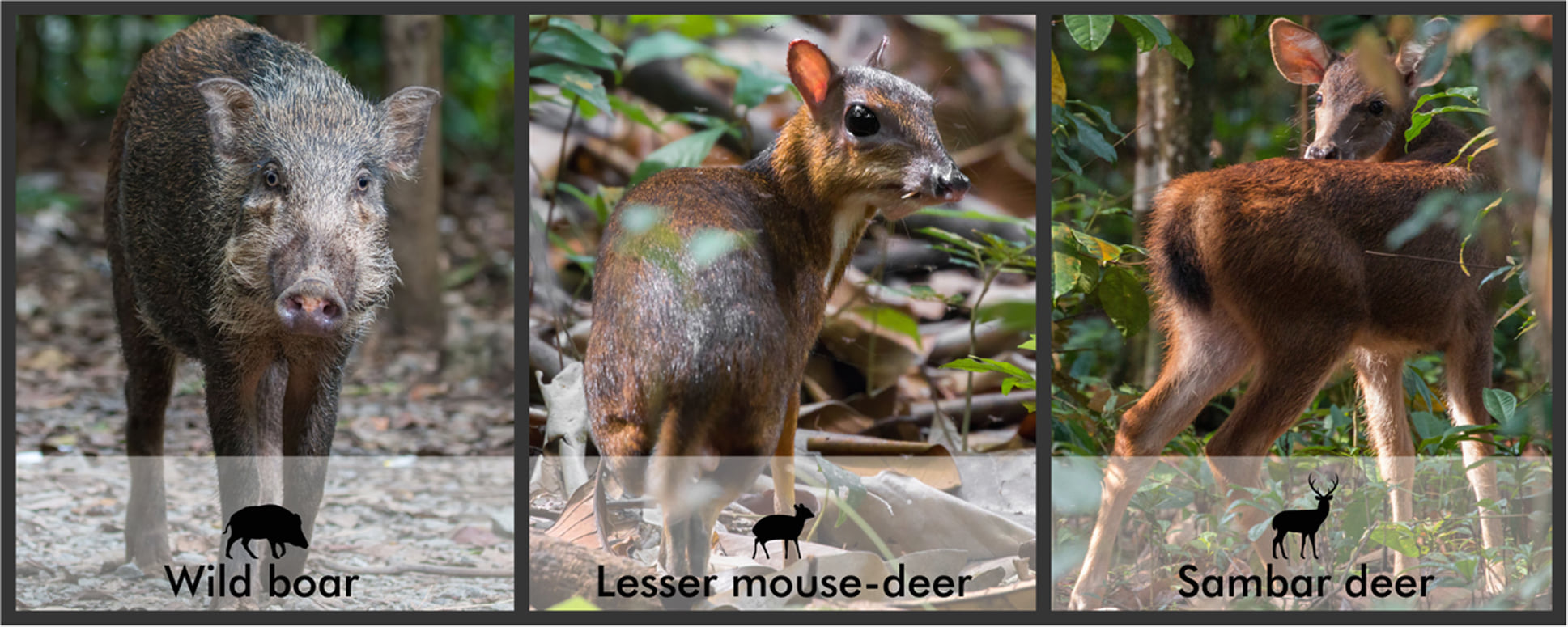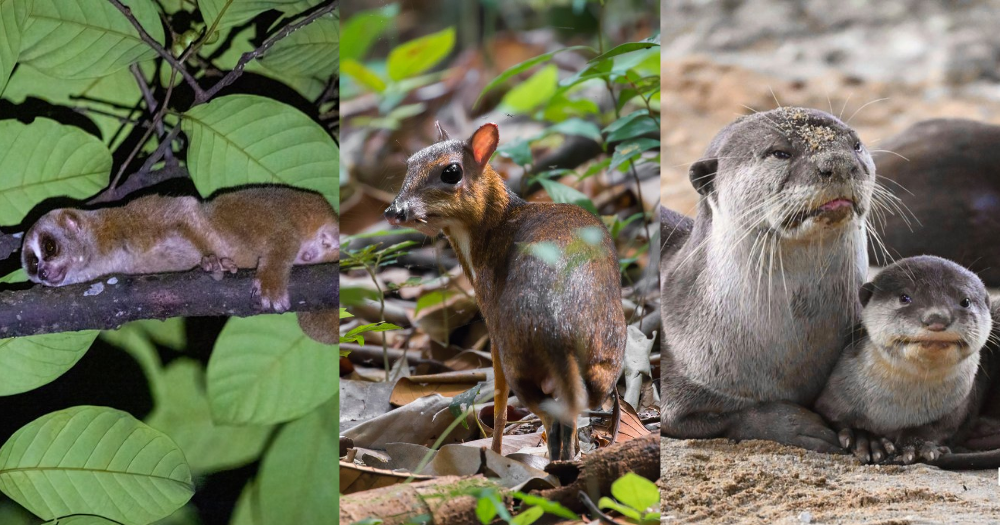Follow us on Telegram for the latest updates: https://t.me/mothershipsg
Conservation efforts in Singapore have bore fruit. Several species have been reassessed with an improved conservation status as more of them sighted in the wild.
In the past few years, the National Parks Board (NParks) has undertaken habitat enhancement and various species recovery plans. There has been greater scientific attention and research on local wildlife too.
Ongoing evaluation of national conservation status of wildlife
From early 2020 to September 2021, the population of various creatures in Singapore have been assessed as part of an update to the Singapore Red List, which collates the national conservation status of Singapore's biodiversity.
 The Singapore Red List is based on the same IUCN (International Union for Conservation of Nature) categories.
The Singapore Red List is based on the same IUCN (International Union for Conservation of Nature) categories.
The assessment of the local populations of plants, birds, butterflies and dragonflies is still ongoing and will complete by end-2022, according to NParks.
This latest edition of the Singapore Red List involves 30 experts from Lee Kong Chian Natural History Museum of the National University of Singapore, Nature Society Singapore, and NParks.
This version of Red List is also the most comprehensive one ever, with all 75 native terrestrial and marine mammal species being assigned a conservation status in Singapore. Sponges (Porifera) and stony corals (Scleractinia) in Singapore have also been evaluated and added into the list.
Improved conservation status for some species
The upcoming edition of Red List has some good news.
Of the newly assessed taxa, the majority of species are categorised as "Near Threatened" or "Least Concern", which also shows the effectiveness of nature conservation and greening efforts at conserving Singapore's biodiversity. More resources can be allocated to species categorised as "Vulnerable" and above, NParks noted.
Several species have been assessed to have an improved conservation status. This suggests success in NParks' conservation efforts and an enhanced resilience of these animals in Singapore, NParks said.
Previously classified as "Critically Endangered" in Singapore, three species are now listed as "Endangered" locally.
They are the Smooth-coated Otter (Lutrogale perspicillata), the Sunda Slow Loris (Nycticebus coucang) and the Lesser mousedeer (Tragulus kanchil).
A new study shows that the Lesser Mousedeer population has increased by four-fold.
New study shows Lesser mousedeer population has recovered since 1990s
A new study, as mentioned earlier, shows that the Lesser Mousedeer population has increased by four-fold.
There used to be fewer than 50 individuals in the 1990s and now there are around 160 to 200 individuals.
The increase in population is likely due to various factors such as intensive reforestation and habitat enhancement, and NParks' efforts to close the forests after dark.
These measures reduce disturbance to the animals in addition to the fact that poaching has reduced since 1990s.
The research also reveals that co-occupany behaviour between the Lesser mousedeer and other two ungulate species, Wild boar and Sambar deer.
 Photos by Max Khoo via
Photos by Max Khoo via
They have different active periods and diets, and therefore there was no evidence that the Wild boar and Sambar deer competitively excluded the Lesser Mousedeer, the study concluded.
Relatively low Wild boar population density in Singapore also means less habitat alteration by the boars.
Such studies help NParks with the wildlife management and conservation efforts in the future.
These studies also highlighted the importance of public outreach on why it is important to not feed wild boars to fuel their population growth, which can affect population of other species like the Lesser mousedeer.
Stepping up on species recovery programme
At the opening of the 10th edition of at the Festival of Biodiversity, Minister for National Development Desmond Lee spoke about how nature-based solutions can help Singapore to become more climate resilient, and ecological resilient by creating new habitats and connecting existing ones.
The opening was officiated by President Halimah Yacob this morning (Sep. 25).
NParks will continue to press on with biodiversity conservation programmes, he said.
13 plant and 13 animal species will be added to NParks Species Recovery Programme, among these include a native orchid species Nervilia singaporensis which was thought to be extinct in Singapore.
The species was rediscovered by NParks researchers in 2019.
The additions will bring the total number of species under this programme to 80 plant and 40 animal species.
NParks will also set more ambitious targets, to have 100 plant and 60 animal species under the programme by 2030. The original targets were 90 plant and 40 animal species.
Top image by Allen Meek via Singapore Wildlife Sightings/FB, by Max Khoo and by Peter Swee via Ottercity/FB
If you like what you read, follow us on Facebook, Instagram, Twitter and Telegram to get the latest updates.

